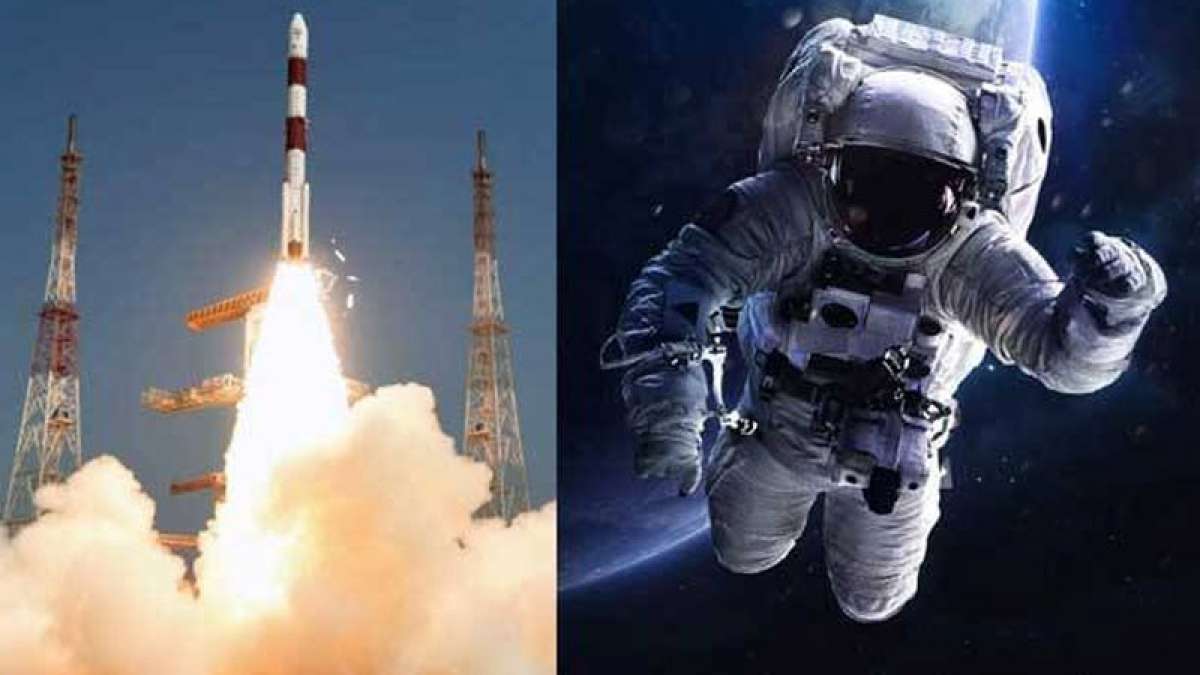India’s first manned mission to space finished, 4 IAF pilots selected for training
 NEW DELHI : The year 2020 is going to be a very crucial period for the Indian Space Research Organisation (ISRO) for two of its most important missions–Gaganyaan, the Indian human spaceflight programme and Chandrayaan-3, the third lunar mission.
NEW DELHI : The year 2020 is going to be a very crucial period for the Indian Space Research Organisation (ISRO) for two of its most important missions–Gaganyaan, the Indian human spaceflight programme and Chandrayaan-3, the third lunar mission.
The space agency has sought an allocation of Rs 14,000 crore from the Centre in the budget for 2020-21.
ISRO chief K Sivan on Thursday said that the design phase for India’s first manned mission to space has been finished. Four Indian Air Force (IAF) pilots have been selected for the training, he told NDTV. The selected pilots have undergone the medical tests and will be trained in Russia and India in coming days.
K Sivan did not mention about the identity of the four pilots, but revealed that they have been chosen because they were fit and healthy. The ISRO chief also said they have a longer list of candidates and will discuss if any problem arises with the top four.
Speaking about the date of the mission, K Sivan said that ISRO is trying its best to launch the mission by the end of this year or early next year. “We are targeting the launch for this year but it may spillover to next year,” Mr Sivan said.
Talking about the the Chandrayaan-3 mission, the ISRO chief said the existing orbiter will be used and a new launch site has been selected. The country’s space programme will attempt the mission next year after Chandrayaan 2 crash landed on the Moon earlier this year in September.
Dr Sivan on Wednesday said that the organisation has identified four astronauts who would be part of the Gaganyaan mission and their training would start from the third week of January.
The astronauts were selected based on the results of the medical examinations including fitness tests conducted at the Institute of Aerospace Medicine (IAM) a premier institute of the Indian Air Force and in Russia.“They are all from the Indian Air Force. Now the training of astronauts will begin in the third week of January in Russia,” said Sivan.
ISRO has set up a ‘Human Space Flight Centre’ in Bengaluru, which will support its quest of making the country’s maiden manned space mission, a success. Gaganyaan, an Indian crewed orbital spacecraft is intended to be the foundation of the Indian Human Spaceflight Programme.
In its maiden crewed mission, it will send three astronauts to orbit the Earth at an altitude of 400 km, for up to seven days. Gaganyaan is a Rs 10,000-crore project and the space agency has kept a target to conduct the manned mission by 2022.
It will, however, conduct two unmanned missions before that. This includes sending a humanoid robot resembling a human to display the ability to send humans into space and bringing them back safely. “We are sending humanoid to simulate the (impact) on humans,” said Sivan.
The whole mission involves building expertise in areas such as space medicine, astronaut health monitoring, life support, radiation protection, space debris protection and personal hygiene systems. The mission would help to conduct several experiments for applications related to areas such as microgravity, bioscience and space operations.
ISRO is aiming another attempt for a soft landing on the moon with Chandrayaan-3 by 2021, but without an orbiter. Sivan said Chandrayaan-3 mission to the moon, comprising a lander and a rover is approved by the Government and activities for its realisation are in progress.
It will more or less repeat the experiments that Chandrayaan-2 was supposed to conduct on the lunar surface in September last year. However, the Chandrayaan-2’s Vikram lander hard landed as the reduction in velocity during its descent did not match with the designed parameters. A successful soft landing would have made India the fourth country to do so on the lunar surface, after the former Soviet Union, the US and China.
A total budget of Rs 615 crore has been earmarked for the Chandrayaan-3 mission. ISRO would have a dedicated propulsion module which would take the lander and the rover to the lunar surface. They would be linked to the Chandrayaan-2 Orbiter which continues to orbit the Moon. The landing location of the lunar surface would remain the same which is the South Pole.(With Agency Inputs ).

